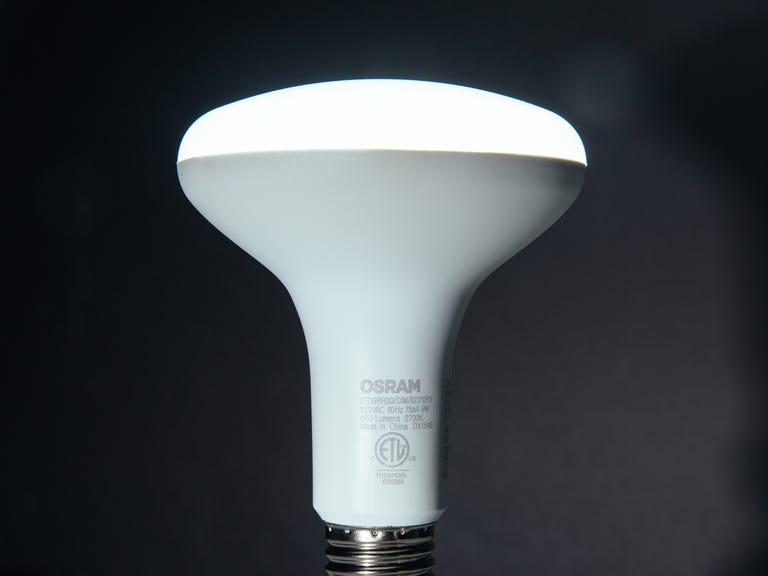 Why You Can Trust CNET
Why You Can Trust CNET Osram Sylvania 65W Replacement BR30 LED Floodlight review: Osram's floodlight LED is a bargain, but not your best bet
Available in a $15 three-pack, the dimmable Osram Sylvania Floodlight LED is one of the most affordable bulbs in its class.
If you just need a couple of cheap replacement bulbs for your home's overhead lighting, you could do a lot worse than the Osram Sylvania Floodlight LED. Sold in a $15 three-pack, Osram's floodlight is plenty bright, decently efficient, and fully dimmable.
The Good
The Bad
The Bottom Line
The problem is that an equally affordable floodlight LED from Philips edges Osram out with better heat management and slightly better dimming performance, too. That doesn't make Osram any less of a bargain in the lighting aisle -- it's just not the first one I would recommend.
Still, there's a lot to like here, starting with dimming performance. The Osram bulb dimmed smoothly on all of the modern dimmer switches I tested it with, never flickering once on any of them. It did, however, show a fair amount of flicker on an older, more outdated rotary dial, so I wouldn't count on it if your dimmer switches are more than five or six years old.
As for more typical specs, the Osram bulb puts out 641 lumens of brightness from a power draw of 9 watts, meaning its putting out 71 lumens per watt. That's decent as far as efficiency goes, but it isn't quite as good as floodlight LEDs from Cree and GE, both of which put out over 80 lumens per watt. Of course, both of those cost a few bucks more per bulb, too.
The Osram LED (pink) finished dead last in this heat management test, which is indicative of a cheaply made bulb.
Where Osram really got spanked was in our heat management test, where it finished in a distant last place. The heat test measures how much brightness each bulb loses as it heats up during a 90-minute test in our lighting lab. All LEDs will lose a little bit of their initial brightness over the first 30 minutes of use, then stabilize once the heat sinks kick in. An LED that's good at handling heat should only lose about 10 to 15 percent of its initial brightness, but the Osram LED lost nearly 25 percent of it. That's dismal.
A heat result that poor is indicative of a cheaply made LED (and one that you probably wouldn't want to use in an enclosed fixture, where the heat has nowhere to go). This is still a decent bargain bulb, but it loses out to the equally affordable Philips Floodlight LED, which doesn't ask you to compromise quite so much. For more, be sure to check out my full rundown of your LED floodlight options.


